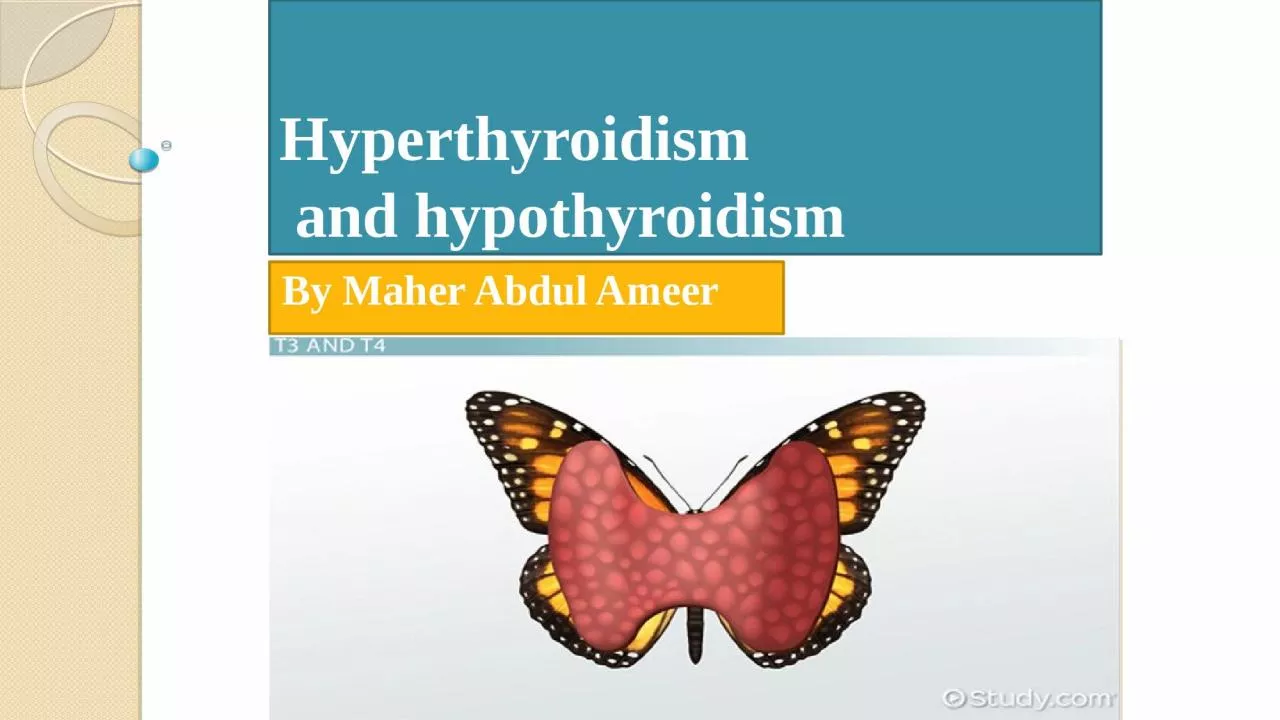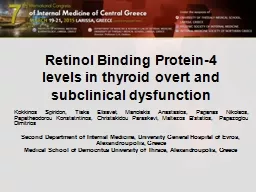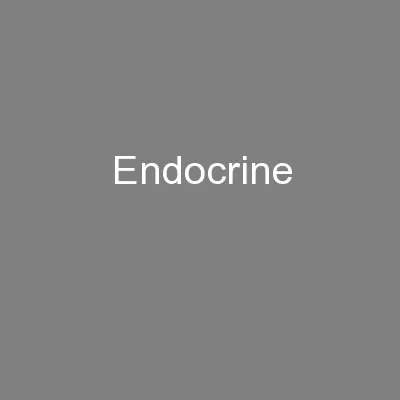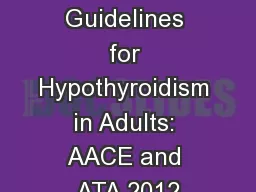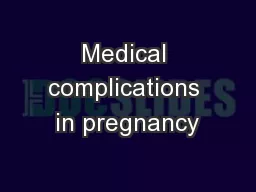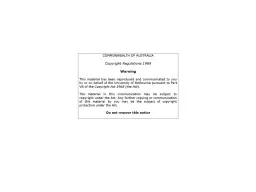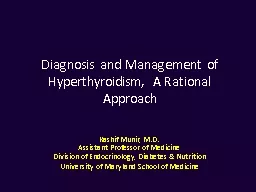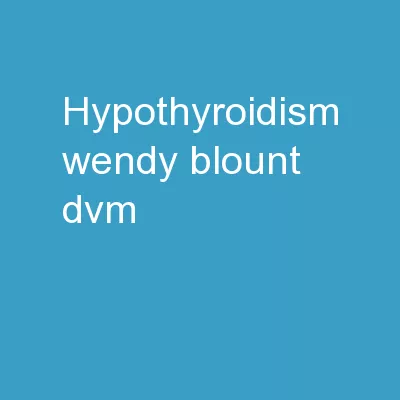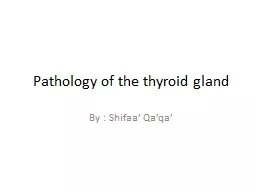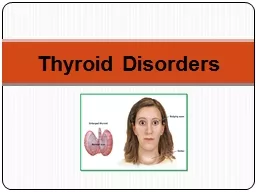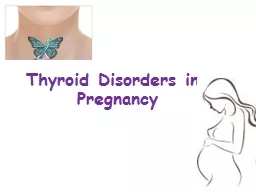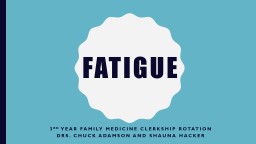PPT-Hyperthyroidism and hypothyroidism
Author : sylvia | Published Date : 2024-02-09
By Maher Abdul Ameer Thyroid gland is a butterflyshaped gland located at the front of the neck It produces tetraiodothyronine T4 and triiodothyronine T3 which
Presentation Embed Code
Download Presentation
Download Presentation The PPT/PDF document "Hyperthyroidism and hypothyroidism" is the property of its rightful owner. Permission is granted to download and print the materials on this website for personal, non-commercial use only, and to display it on your personal computer provided you do not modify the materials and that you retain all copyright notices contained in the materials. By downloading content from our website, you accept the terms of this agreement.
Hyperthyroidism and hypothyroidism: Transcript
Download Rules Of Document
"Hyperthyroidism and hypothyroidism"The content belongs to its owner. You may download and print it for personal use, without modification, and keep all copyright notices. By downloading, you agree to these terms.
Related Documents

